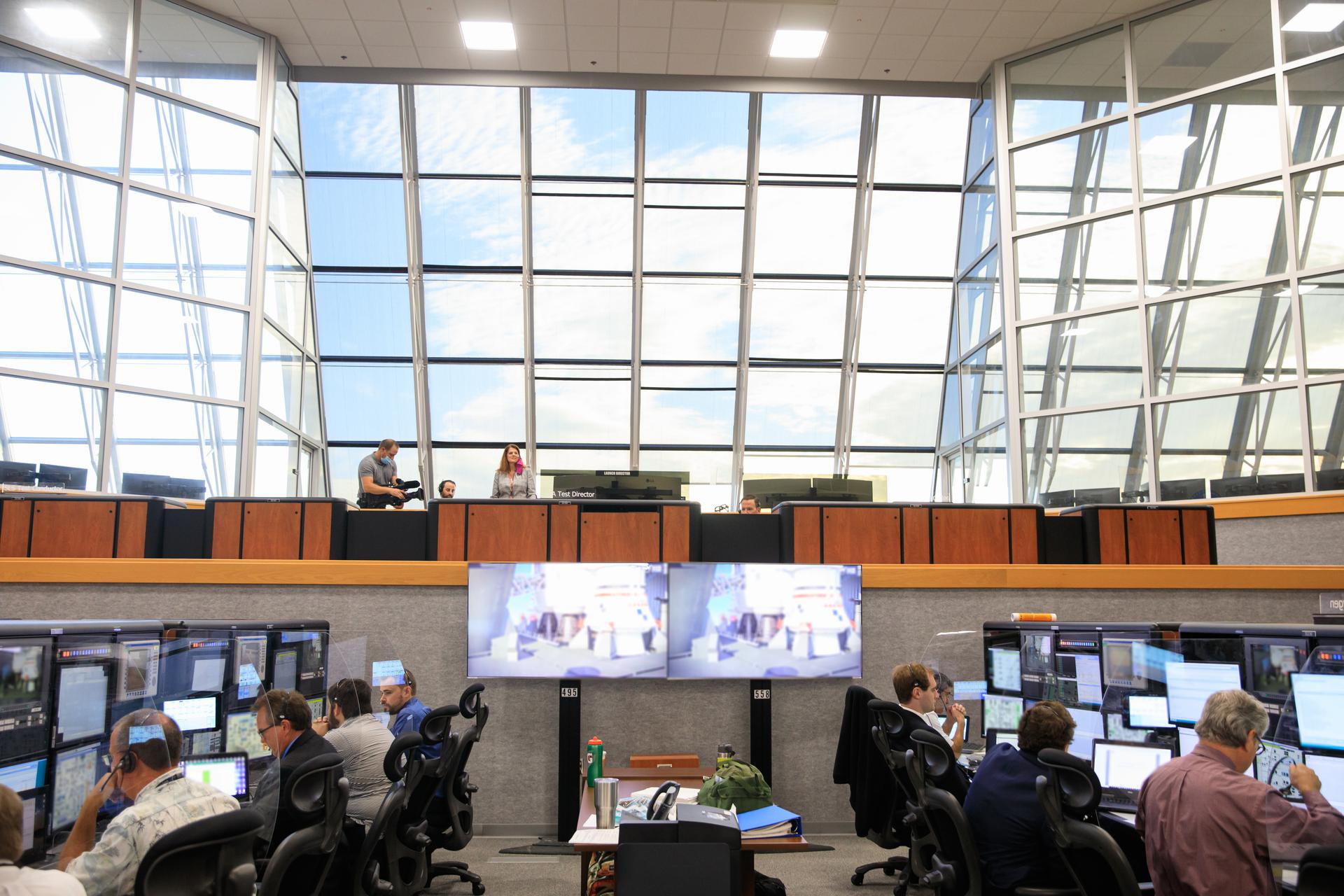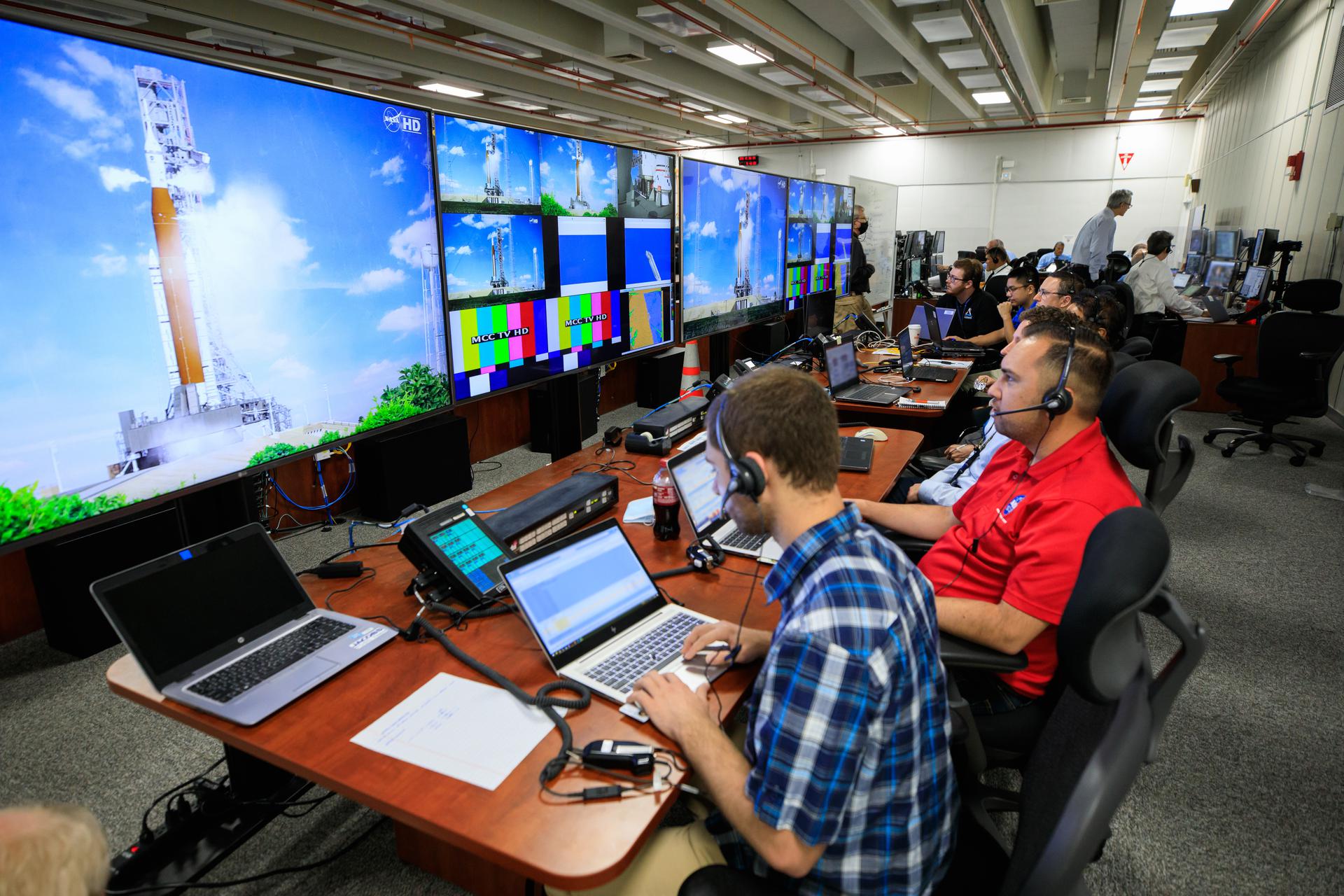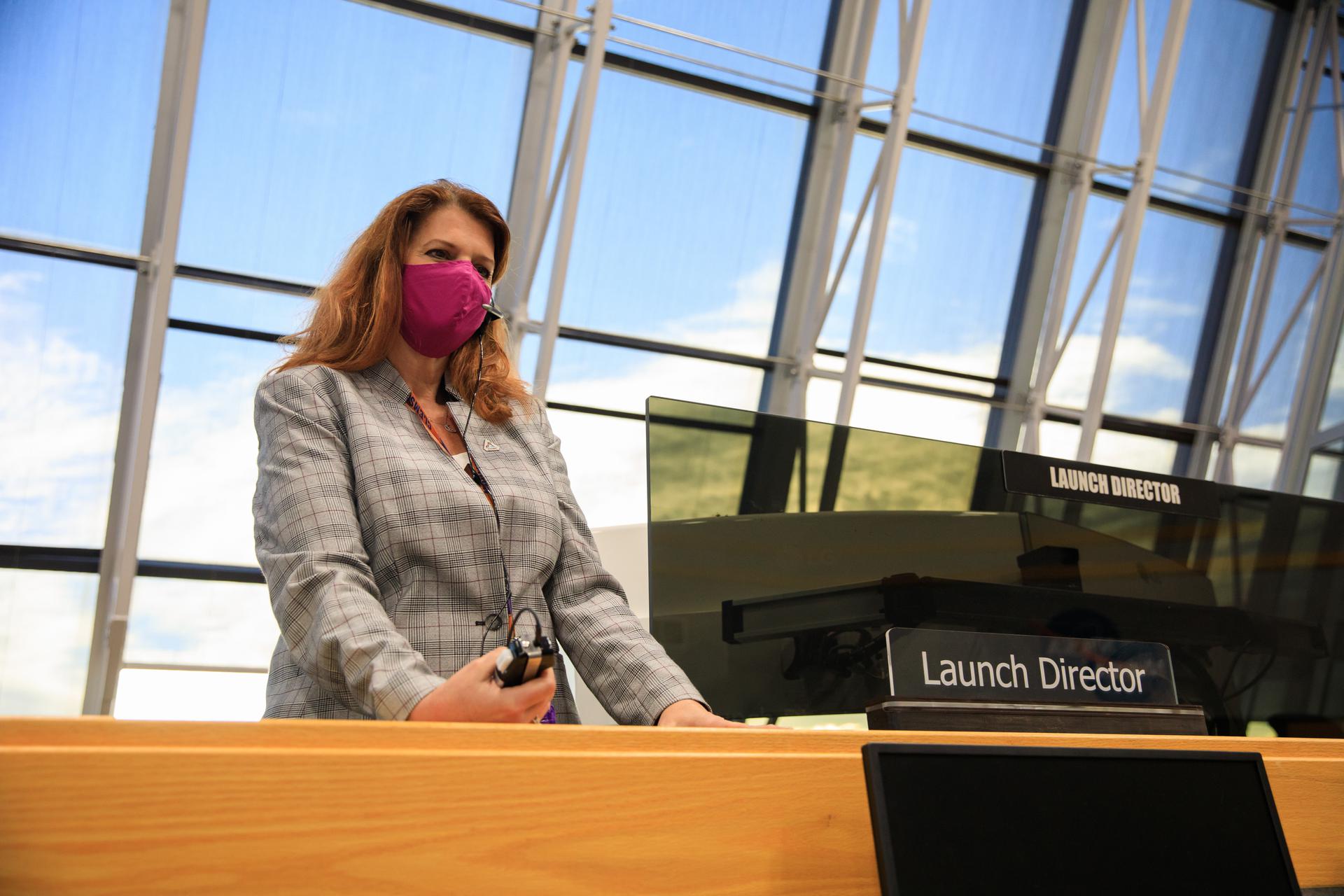
By Danielle Sempsrott
NASA’s Kennedy Space Center
NASA is gearing up for Artemis I – the inaugural flight of the Space Launch System (SLS) rocket and Orion spacecraft as an integrated system, setting the stage for crewed flights to the Moon – and part of that involves rehearsing all aspects of the launch countdown. Over the last few years, teams with the agency’s Exploration Ground Systems (EGS) and contractor companies at NASA’s Kennedy Space Center have worked through multiple launch simulations, and now, those teams are kicking it up a notch.
On July 8, engineers and test directors from Kennedy, Johnson Space Center in Houston, and Marshall Space Flight Center in Alabama came together to perform the first joint launch countdown simulation for Artemis I.

“There are a lot of details to think about, between making sure all of the data paths are set up, all of the voice loops are configured correctly, and the big-picture coordination of making sure everybody’s on the same page,” said Wes Mosedale, technical assistant to the Artemis I launch director. “It’s a lot more involved, but it’s also exciting because we’re getting to the point where are configured just like we will be on launch day.”
Earlier simulations involved Kennedy teams performing their own, local training exercises that introduced fictional but realistic problems for engineers to discover and work through. Now, as NASA gets closer to launch, the three centers will rehearse all aspects of the launch countdown together.
“These joint sims are the next step of all the efforts to train our team on our path to Artemis I,” Mosedale said. “They exercise our team through an anomaly detection and reporting protocol so that when we do this on launch day, it becomes automatic for our team.”
Not only did this simulation involve NASA participation from multiple centers; it also involved several of the contractors who designed and manufactured the rocket and spacecraft – Boeing, United Launch Alliance, Northrop Grumman, Lockheed Martin, Aerojet Rocketdyne, the European Space Agency, and Airbus.
“Now if something were to come up during one of these simulations, we’ll have their expertise on the other end of the line. Our engineers can work through it, but it always helps to have the expert who built the system there,” said SLS Test Conductor Roberta Wyrick, who is on the Test Operations and Support Contract with Engineering Research and Consulting, Inc.

Under the leadership of Artemis I Launch Director Charlie Blackwell-Thompson, Kennedy’s team of engineers will be seated at consoles inside Firing Room 1 and Firing Room 2 of the Launch Control Center for the simulations, using software to replicate the commands and operations they will be giving and monitoring on launch day. One of those engineers is Krista Hayes, who worked in the main propulsion system and engine group during the Space Shuttle Program and is now lead for that same group on the Test Operations and Support Contract with Jacobs.
“My main goal was to sit on the prime launch team for the first launch of this rocket, and there’s no better place to be than in that firing room contributing to that,” she said. “This will be a culmination of all the training and actually building the software ourselves, testing it, and doing all of the hardware operations that we’re doing now. These are the best people for the job, so it’s going to be really special to have all of those people in that room together.”
This particular simulation took teams from cryogenic loading – filling tanks in the SLS core stage with supercold liquid hydrogen and liquid oxygen – all the way through countdown and liftoff.
Following this, six more joint launch simulations are scheduled to take place before SLS and Orion blast off from Kennedy’s Launch Pad 39B – three that will focus on cryogenic loading and three focusing on the terminal countdown. All of these will help certify that the Artemis I launch team is ready to handle anything thrown their way on launch day.
“When it comes to launch day and cryogenic loading, it’s not like our normal daily testing – it’s a whole new level since liquid hydrogen is extremely flammable and would ignite if released into the atmosphere,” Hayes said. “It’s so critical to be able to solve a problem when you have cryogenics on board as fast as possible, so we train everybody over and over again so that they know how to react, they’re comfortable in those situations, and they have the confidence to act fast.”
Through Artemis, NASA will send the first woman and first person of color to the lunar surface, and establish a long-term presence at the Moon. The agency will learn how to live on the Moon before venturing on to Mars, and these training simulations will help ensure those missions are a success.
“We have individually been preparing for launch, but now it’s time for all of us to come together and train. We want to be prepared on launch day, and these simulations are the best way to get that practice,” said Blackwell-Thompson. “Our Artemis team is not about a single team member, but rather, the work of everyone as we bring our best to launch this rocket on a mission of a lifetime.”
To view additional photos of Artemis I launch and mission countdown simulations, click here.

























